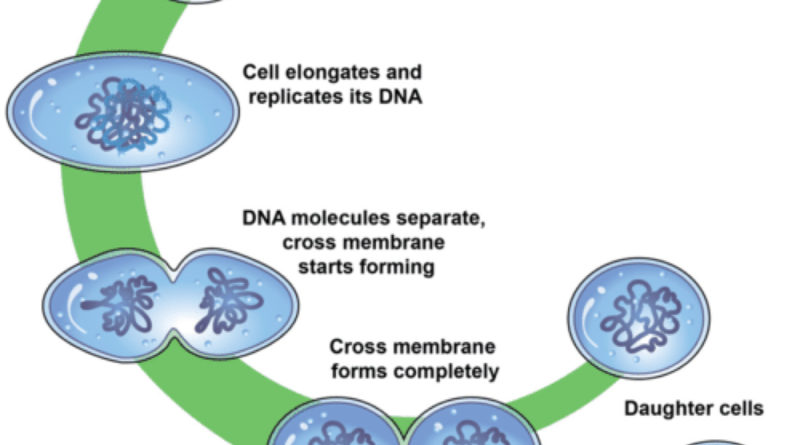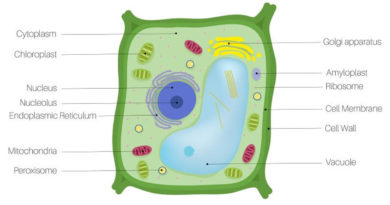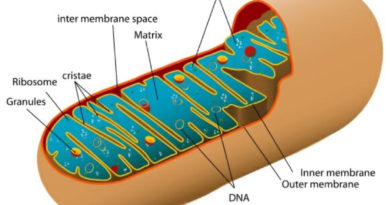The Procaryotic Cell Cycle
The procaryotic cells are considered as primitive cells. It is because of its simple structure and limited functionalities. It is differentiate from eucaryotic cells, as they do not have membrane bound nucleus and other organelles.
Because of its simple structure its cell division is also simple in nature.
The cell cycle is the complete sequence of events extending from the formation of a new cell through the next division.
Most procaryotic cells reproduce by binary fission, although some procaryotes reproduce by budding, fragmentation and other means.
Because in procaryotes, male and female cells are not differentiated, most of the time they reproduce by asexual methods. Their genetic material is already haploid which replicate to form other set of genetic material for the new cell.
Binary fission is a simple type of cell division. Which is most common in procaryotic cells. During the process of binary fission parent cell elongates, replicates its genetic material, and separates the newly formed DNA molecules so there is one chromosome in each half of the cell. Finally, a septum (or cross wall) is formed in mid cell, dividing the parent cell into two progeny cells, each having its own genetic material and complement of other cellular constituents.
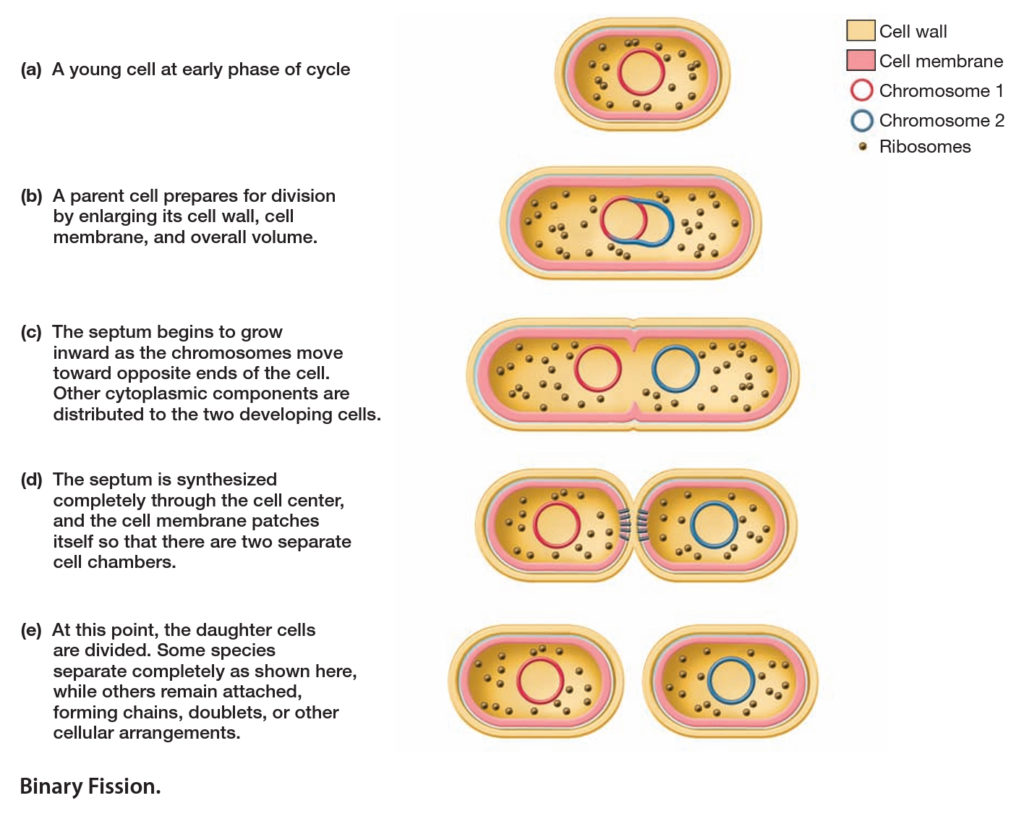
Despite the simplicity of the procaryotic cell cycle, it is poorly understood. E. coli cell cycle is most studied and on that bases there is two pathways function during the cell cycle. One pathway replicates and partitions the DNA into the progeny cells, the other carries out cytokinesis (septum formation and formation of progeny cells). Although these pathways overlap, it is easiest to consider them separately.
Chromosome Replication And Partitioning
Because of its small size procaryotic cell genetic material is not too long. As known, it is found in circular form within the cell. Each circular chromosome has a single site at which replication starts called the origin of replication, or simple the origin. Replication is completed at the terminus. Which is located directly opposite the origin.
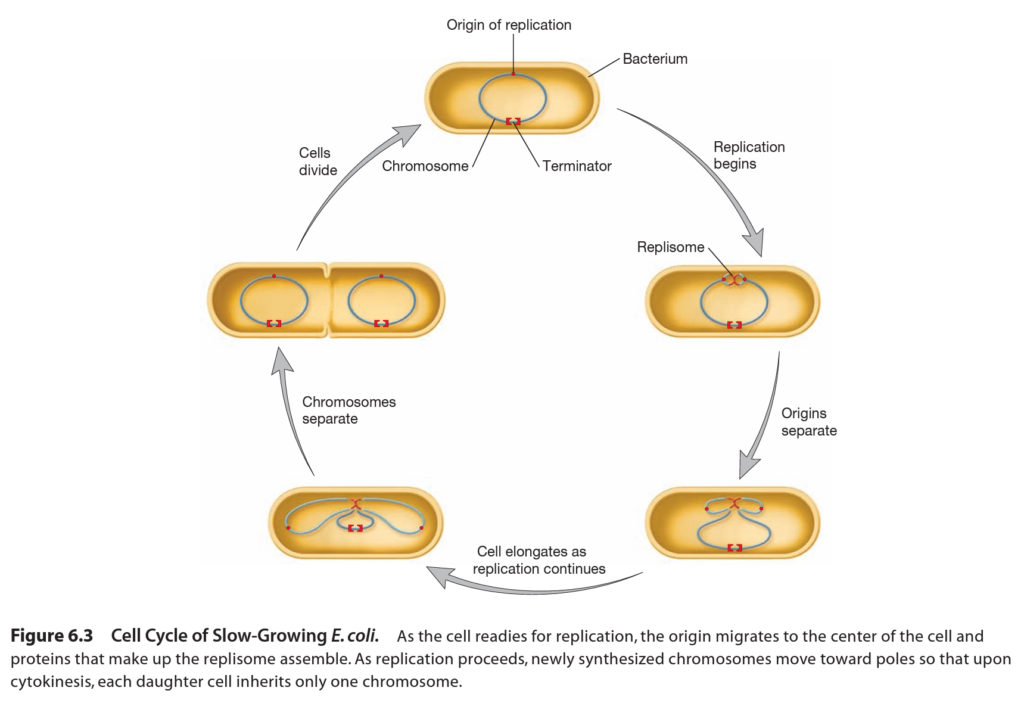
DNA replication proceeds on both directions from the origin and the parent DNA is thought to spool through the replisome, which remains relatively stationary. As progeny chromosomes are synthesized, the two newly formed origins move toward opposite ends of the cell, and the rest of the chromosome follows in an orderly fashion.
The mechanism by which by which chromosomes are partitioned to each daughter cell is not well understood.
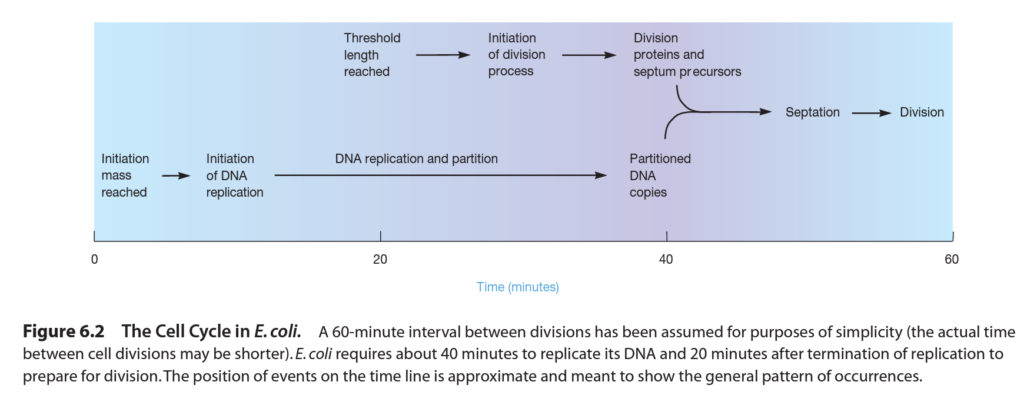
Cytokinesis
Septation is the process of forming a cross wall between two daughter cells. Cytokinesis, a term that is used to describe the formation of two eukaryotic daughter cells, is now used to describe this process in procaryotes as well. Procaryotic septation can be divided into several steps. (1) selection of the site where the septum will be formed; (2) assembly of a specialized structure called a Z ring, which divides the cell in two by constriction; (3) linkage of the Z ring to the plasma membrane and perhaps components of the cell wall; (4) assembly of the cell wall-synthesizing machinery; and (5) constriction of the Z ring and septum formation.
